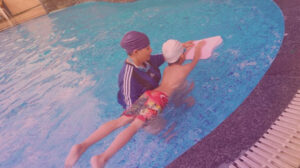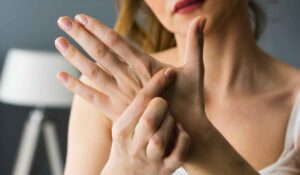What is de Quervain’s tendinosis
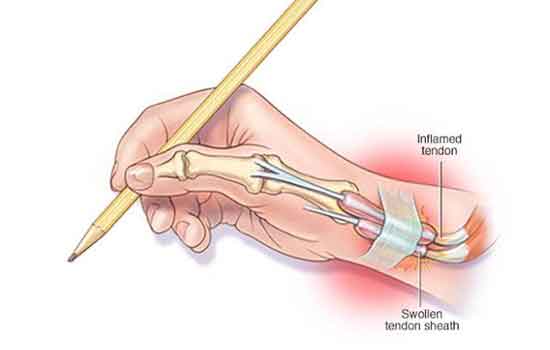
De Quervain’s tendinosis is a painful swelling (inflammation) of specific tendons of the thumb. The condition is also known as de Quervain tendinitis or de Quervain’s tenosynovitis.
De Quervain’s tendinosis is one of the most common types of tendon lining inflammation (swelling). This condition affects women eight to 10 times more often than men.
The pain, which is the main complaint, gets worse with the abduction of the thumb, grasping action of the hand, and an ulnar deviation of the wrist. Thickening and swelling can also be present.
What causes de Quervain’s tendinosis? :-
Tendons are bands of tissue that attach muscles to bones. Usually tendons slide easily through a tunnel of tissue called a sheath. The sheath keeps the tendons in place next to the bones of the thumb. Tendons that easily slide through their sheaths allow the thumb to move without difficulty or pain. The pain may extend from the forearm to the thumb base.
Any swelling of the tendons and/or thickening of the sheaths cause friction. The tendons can no longer easily slide through their sheaths. When this happens, certain thumb and wrist motions become more difficult to do.
De Quervain’s tendinosis can be triggered by several factors, including:
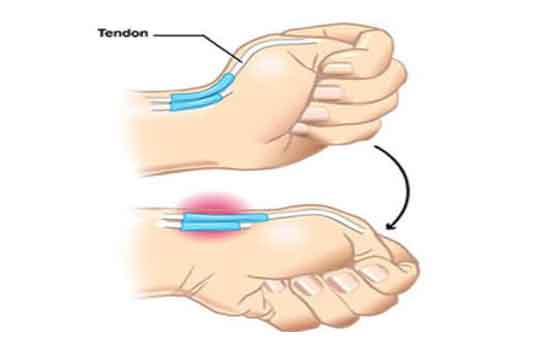
1. Overuse.
2.A direct blow to the thumb.
3.Repetitive grasping.
4.Inflammatory conditions (including arthritis). Activities that require a sidewise motion of the wrist while you are gripping with the thumb can aggravate this condition. Hobbies and sports that use this motion include:
Lifting young children.
Gardening.
Racquet sports (tennis, racquetball).
Skiing.
Using a hammer.
SYMPTOMS:-
Symptoms of de Quervain’s tendinosis can include:
1.Pain and tenderness along the side of the wrist on the thumb side.
2.Pain that gets worse as you use the hand and thumb.
3.Pain that appears suddenly or develops over time.
4.Pain that travels into the thumb or from the wrist to the lower arm (forearm).
5.Pain or difficulty when moving the thumb, especially when grasping or pinching objects.
5.Feeling snapping or popping sensation in the wrist when moving the thumb.
How is de Quervain’s tendinosis DIAGNOSED? :-
The test most often used to diagnose de Quervain’s tendinosis is the Finkelstein test.
Your PHYSIOTHERAPIST will ask you to make a fist with your fingers wrapped over your thumb. Keeping your hand in a fist position, the wrist is moved up and down — the motion of shaking someone’s hand. In this test, the swollen tendons are pulled through the narrowed sheath. If this movement is painful, you may have de Quervain’s tendinosis.
PHYSIOTHERAPY
TREATMENT :-
The aim of non-surgical management is to reduce pain and swelling which can include
1. Patient education regarding avoiding repetitive or aggravating movements
2. Nonsteroidal anti-inflammatory drugs (NSAIDS)
3. Ice/heat packs
4. Physical Therapy
5. Thumb splinting
Physical Therapy Management:-
Ice/Heat Packs – Heat can help relax and loosen tight musculature, and ice can be used to help relieve inflammation of the extensor sheath.
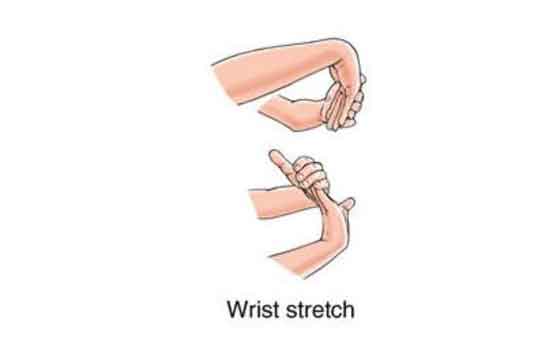
Massage – Deep tissue massage at the thenar eminence can help relax tight musculature that causes pain. . Graston Technique of manual soft tissue mobilization along with the eccentric exercise is also helpful. Graston technique includes breaking down fascia restriction, stretching connective tissue, and promoting a better healing environment.
Increasing strength
The progression of exercise therapy is as follows:
isometric
eccentric
concentric inner range
theraputy
radial nerve glides
Therapeutic Ultrasound has also better outcomes in pain reduction and healing..
Taping Technique can also be used to decrease pain and improve function..
Mobilisation with movement has shown effectiveness in decreasing the pain, improving range of motion, and improving the function of a patient with De-Quervain tenosynovitis. The therapist provides a manual radial glide of the proximal row of carpals, then asked the patient to move her thumb into radial abduction-adduction.[22] Mobilisation with movement performed for 3 sets of 10 repetitions and followed by eccentric hammer curl exercise with theraband and high voltage electrical stimulation has shown effective result after 6 months followup..
Treatment at Best Physiotherapy clinic in Dhakoli..
Blossom physiotherapy centre is one of the best physiotherapy and rehabilitation centre in Dhakoli. And is well equipped with ultra modular equipments. Dr Jyoti Gupta(MPT pediatrics) as well as certified yoga instructor , She completes her course from well known YOGA ALLIANCE INTERNATIONAL FNY STUDIO. She is the head of Blossom Physiotherapy centre. There is a huge team of qualified professionals who work as a team. They all are specialised in their respective fields and apply their valuable knowledge in recovery of patients.
They always works on root cause of the disease and work to treat accordingly. So in the nutshell i will advise to visit the clinic and have excellence experience..
For more info visit www.blossomsphysiotherapy.com


